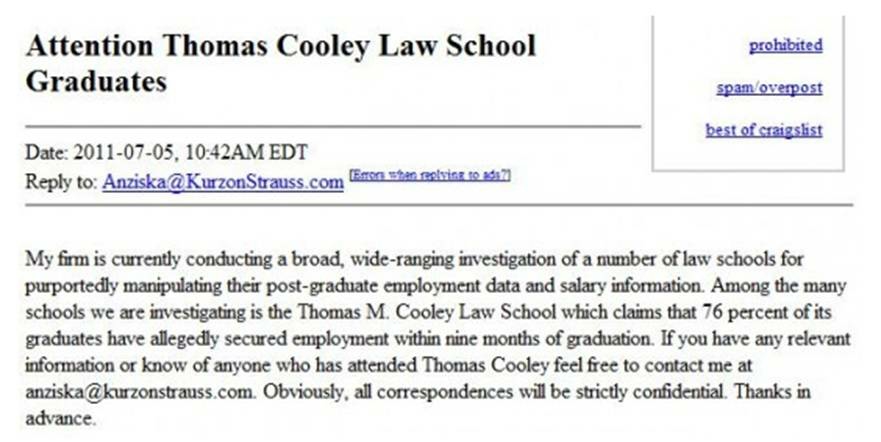Law Students Put Their Education to Work and Sue Their Schools
/Law school graduates are seeking class-action status in a suit against their alma maters Thomas Cooley Law School and New York Law School. The plaintiffs claim the schools defraud applicants by overstating job placement rates. Apparently, included in some schools' employment rates are people in part-time jobs, temporary jobs, jobs that don't require a J.D., and fellowships sponsored by the school. The plaintiffs are seeking tuition refunds and changes in how employment numbers are reported.
To defend its data, Cooley issued a report (download) claiming, "Study Shows Lawyers Have One of the Highest Employment Rates of All Professional Occupations." Cooley has also responded with a lawsuit of its own against the plaintiffs' attorneys claiming defamation because of ads such as this:
- Read more about the debate over statistics here. How do you assess the law schools' communication to students? Based on this information, do the plaintiffs have a case?
- Read the employment report issued by Cooley. What parts of the report do you find most and least convincing?
- After reading the Cooley report, are you more or less sympathetic to the plaintiffs? In other words, how effective is the report in making the school's argument about employment?
- Beyond the legal questions, and based on what you know from reading, do you believe these law schools are communicating ethically to applicants? Why or why not?












